It’s relatively rare for a car company to make drastic adjustments to a car during a midcycle refresh, but that’s just what Polestar has done with its 2. Even though the 2024 Poletar 2 looks nearly identical to the one it replaces – save for a few tweaks – underneath, there’s a much different story.
New drive wheels, more power, more range and a new front grille (if you want to call it that) are the big stories here, and each of them deserves to be highlighted. With these changes, Polestar took an already great EV and made it even better, right as the rest of its competition does nearly the same thing.
Full Disclosure: Polestar flew me out to Denver, Colorado, put me up in a nice hotel and fed me food, all so I could try out its newest creation.
2024 Polestar 2: What’s New?
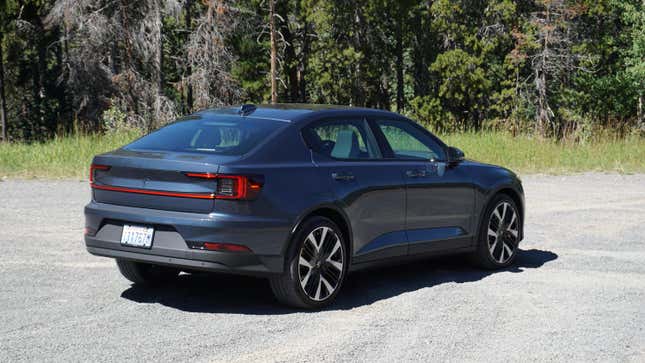
Well, in a couple of words, a lot. In the natural lifecycle of cars, the 2 is in the sweet spot for a bit of a refreshing. It’s been on sale for a few years now, so the folks in Sweden decided it was time for a bit of a change for the sedan/hatchback/crossover/liftback thing.
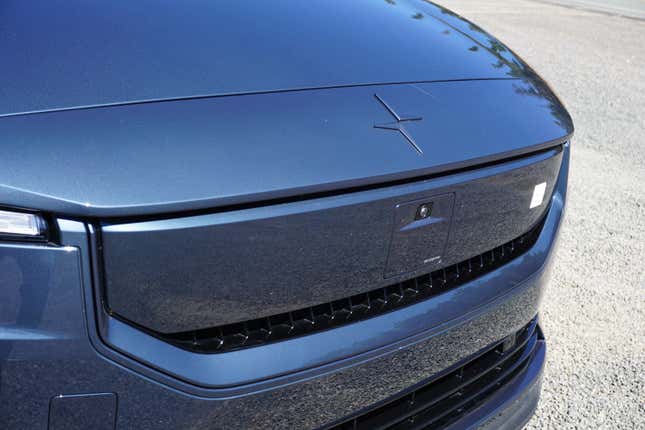
Not too much has changed visually. Honestly, there are only a couple of ways to tell you’re looking at a 2024 Polestar 2 and not an older car. One of them is wheel design. There are three new rims (a 19-inch and two 20s) to choose from depending on how you spec your car. The big differentiator, though, is the “SmartZone” grille.
It’s an array of sensors and radars that are used for safety and assisted driving systems in place of the regular grille. It’s popped up on the front ends of Polestar’s new and upcoming cars, and a spokesperson for the automaker tells me it is meant to bring the 2 more in line with the rest of Polestar’s future fleet. It also comes with some of the best marketing jargon I’ve ever read. Polestar says it is supposed to signify the “shift from ‘ breathing’ through a front grille to ‘seeing’ the road ahead reflecting the high-tech nature” of the 2. Sure, why not? I’m not sold on the way it looks, but the 2 is handsome enough that it doesn’t matter.
The real changes to the 2 come underneath the car – stuff you can’t see – especially in the case of the single-motor Polestar 2. The company says a new 82 kWh battery that can change at 205 kW (20 percent faster than before) is good for an EPA-estimated 320 miles of range. That’s up 50 miles over the old car.

But, just because there’s more range does not mean power suffers. It’s up big. Polestar says an all-new rear-mounted motor produces 299 horsepower and 361 lb-ft of torque. That’s up 68 hp and 118 lb-ft of torque over the old car – both very healthy numbers. It also means that the 0-60 time has dropped from 7 seconds to 5.9.
Of course, since the new base 2 is now rear-wheel drive rather than front, it’s a lot more fun from a dynamics standpoint. Dynamics are a big part of why the automaker moved the drive wheels rearward. Engineers wanted the car to be more fun to drive, and they wanted to improve packaging. We’ll get more into the driving dynamics in a little bit.
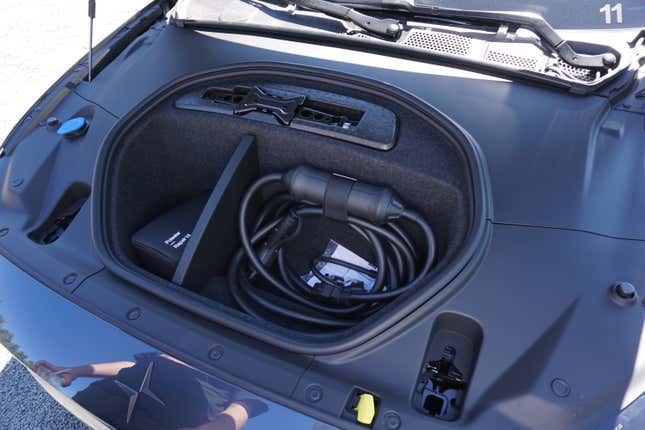
Don’t think that just because Polestar paid all this attention to the single-motor 2 it left the dual-motor car in the lurch. Big changes have also come to the top dog Polestar 2. The automaker tells us that it has two new, more powerful motors as well as a new battery, inverters and a more rear-biased power delivery. The battery stays the same at 78 kWh, and so does charging: 155 kW. That’s good for 276 miles of range, up 16 miles over the old car.
In its base form, the dual-motor 2 now puts out a combined 421 horsepower (up 13 from the old car) and 546 lb-ft of torque (up 59 lb-ft). That’s enough to drop 0-60 to just 4.3 seconds, a 0.2-second improvement over the outgoing 2. But I get it. You desire more power. You require speed. Well, if you give Polestar $5,500, it’ll give you the Performance Pack in return. That bumps up power to 455 horsepower, and torque stays the same at 546 lb-ft. That drops the 0-60 number to 4.1 seconds.
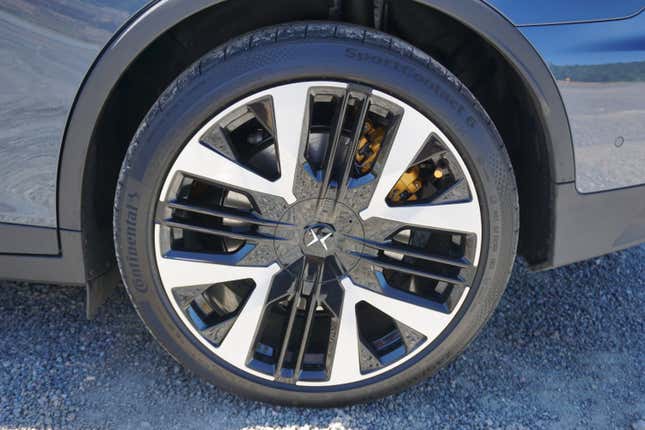
In terms of optional packages, those stay pretty much the same. However, dual-motor cars now get the Pilot Pack standard. If you want fancy driver-assist tech in your rear-motor 2, you’ll have to pony up $2,000. If you want the Plus Pack (which is included in the Performance Pack), on either car, it’ll cost you $2,200 – about two grand cheaper than before. That gives you niceties like a Harmon Kardon stereo, panoramic roof, a different seat upholstery, ambient lighting, a heat pump, and fully electric power front seats among other things. It’s probably worth the price of admission if you ask me. There’s also the aforementioned Performance Pack available on dual-motor cars and the Nappa Pack, which, you guessed it, gives the 2 Nappa leather seats.
Driving The 2024 Polestar 2

Everything you know to be true about electric vehicles and their acceleration is true in the Polestar 2. Off the line, this thing is quick – especially the dual motor car. It feels like it has every bit of 455 horsepower and 546 lb-ft of torque, if not more. It’s also got passing power, too. Step on it at 60, and this thing will rocket past just about everything else.
The single motor car is notably less-quick. The numbers aren’t bad at 299 horsepower and a 0-60 of under 6 seconds, but you feel the speed drop off after you’re above 70.
In either car, if you turn ESC to sport, you’re going to feel some natural rotation from the back end while going through corners. Interestingly, there’s a bit more oversteer in the all-wheel-drive car. As I mentioned earlier, engineers tuned it to have more rear bias, so if you mash it in a corner, the rear will want to come around. The same thing can be said for the single-motor car. But, because it has to make do with a lot less horsepower and torque, it cannot truly overcome the traction of the rear tires.
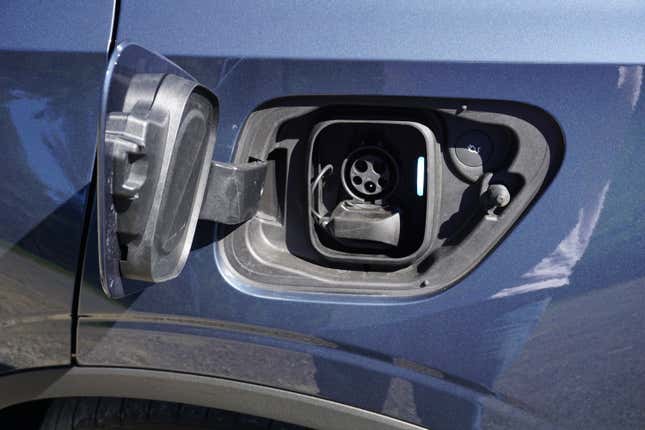
Moving on from power, the steering in both cars is the usual electric car vague we’ve come to know and, well, deal with. It is adjustable, though, so you can make it feel really heavy. Putting it in it’s lightest setting means you can move the wheel with a pinky. Don’t use the middle setting, though. The middle ground is for losers.
Like just about every electric car, the Polestar 2 comes set up for one-pedal driving. There are several different levels for it, and if you want you can turn it off completely. I elected to leave it on the whole time. OPD is a fun little skill to master if you’re so inclined, and even in its most aggressive setting, the 2’s system is silky smooth. The dual-motor car’s system does feel a bit more grabby than the single’s, but that’s likely due to the fact that there’s more, well, motor.
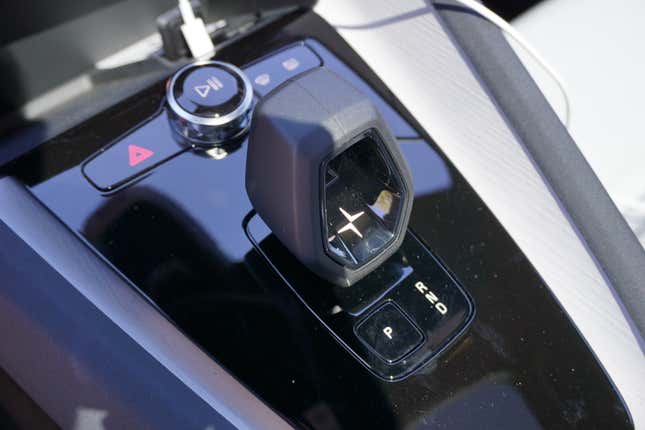
In terms of ride and insulation from the road, both cars are really solid. Up front, the suspension soaks up just about everything, and very little road noise enters the cabin. It can be a very serene place to be. The back… not so much. You get a good amount of road noise back there, and the rear suspension does not feel nearly as comfortably tuned as the front, but then again it does drive fairly well in a sporty setting. Tradeoffs.
Oh yeah, quickly. The driver assist suite works very well, though I do wish it would follow more closely while adaptive cruise was activated.
Inside The 2024 Polestar 2
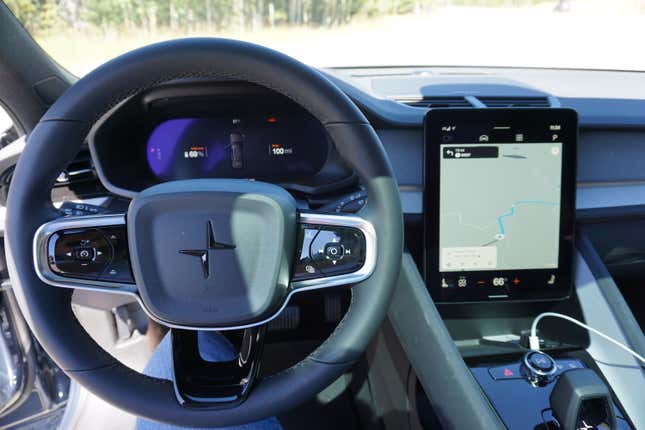
You probably noticed I haven’t talked about the car’s interior much. Well, that’s because not much has changed. The 2024 2’s interior is almost identical to the car it replaces. If you ask me, that’s a good thing. It’s a wonderful place to be, and probably one of the better interiors this side of $100,000. No matter what trim or model you go with, occupants are treated to lots of soft-touch surfaces, interesting patterns, tech that works as designed and neat materials that set it apart from other cars.
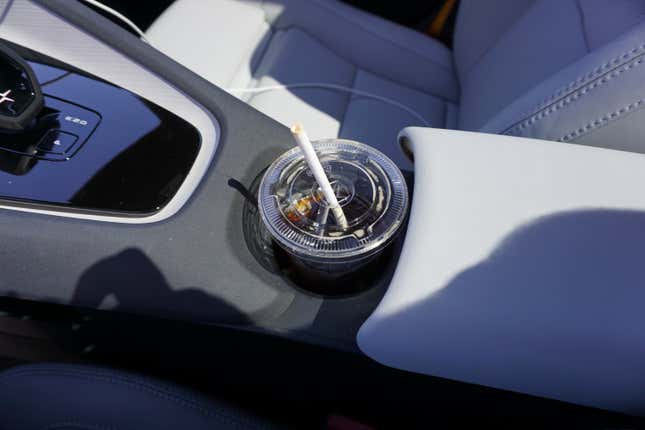
There are also enough touches that let you know you’re driving something that isn’t your run-of-the-mill car. The panoramic glass roof will catch the eye of anyone inside, and it’s necessary since it gives you more headroom than the standard roof car. Moving on, you’re also going to notice that you’re missing a start button, but it’s sort of neat to just get in and drive, and it has the greatest blinker noise I’ve ever heard.
When it comes to tech, everything just works. The vertical center screen is simple enough to use that even an idiot like me can operate it with ease. CarPlay hooks up nice and easy if you aren’t into using a native interface, and the gauge cluster screen is very crisp, but not overly customizable.
Everything in this car works in harmony to make a very relaxing package. I love it.
Summing Up The 2024 Polestar 2

If it was my money, I’d opt for the rear-wheel drive car. Around town, it feels just as fast as the more powerful, dual-motor car. But, you get a lot more range and you’ll save a lot of money.
Speaking of money, the single-motor car starts at $51,300 (including destination). The dual-motor will cost you $56,700 to start. Load that bad boy all the way up, and you’ll be a few dollars short of $72,000. No matter how you slice it, there’s a decent value here.
If you’re in the market for an EV, the Polestar 2 should be at or near the top of your list. It’s such a wonderfully cohesive, easy-to-use package that’ll make you wonder how other automakers have made cars so difficult to navigate. The changes Polestar has made to the 2 have reaffirmed it as one of the best electric vehicles you can buy right now.